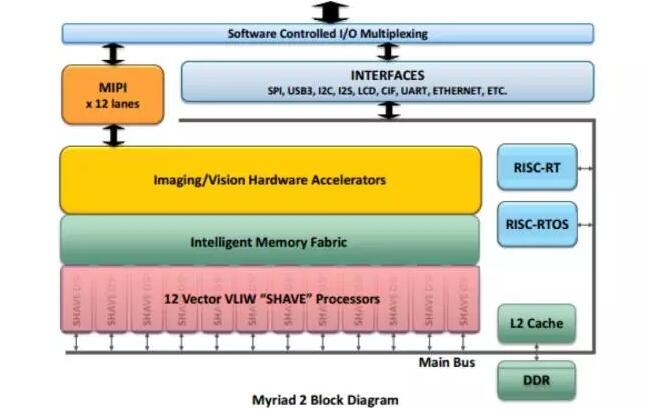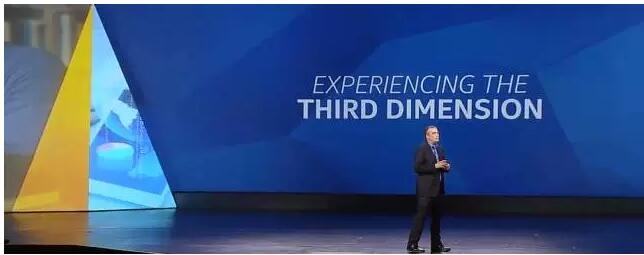
Intel finally took the industry's hottest Movidius into their arms. Most of the news over the past few days is interpreted as Intel's entry into the drone or AR market. This is certainly not wrong, but it seems to be too easy to understand from the point of view of entering a market. Through the surface, combined with Intel's recent acquisitions, we have reason to believe that Intel wants to get rid of the shackles of traditional processor architectures and look for new architectures to handle the next generation of computing tasks .
The central processor, or CPU, has been ruling the entire computer world for decades. Although Intel is defeated by the ARM camp in the field of mobile processors, the core of the mobile processor is still the CPU. Although the GPU is increasingly valued by the market and the industry, its main role is still to speed up the game, positioning in a dedicated graphics accelerator. Until a few years ago, Nvidia introduced the concept of GPUs, applied GPUs to applications such as floating-point computation and scientific computing, and began to directly challenge processor giant Intel in the field of high-performance computing. However, this area is niche after all, and Intel also introduced Xeon Phi's accelerator cards to meet the challenges. The battle conditions are still within the control of Intel.
However, with the rise of artificial intelligence represented by deep learning, the GPU has found a more suitable field to challenge the dominance of the processor giant. This area is clearly a brand new field, and artificial intelligence will also be the most important technology field in the future. Once it has occupied a favorable position in this field, it is very likely to subvert the original processor market structure. From Nvidia's point of view , GPU is the best processor architecture for running deep learning. In the future, GPUs are used to run all types of artificial intelligence applications in data centers and various embedded environments. If this scenario is realized, the original processor giants Intel and ARM will all give up the throne.

Obviously, the original giants were not willing to give up the throne, so we saw Intel successively shot Altera, Nervana and Movidius.
Among them, Altera is an FPGA giant. Using FPGA to accelerate the depth algorithm is a hot direction in the industry.
Nervana's co-founder and CEO is the project leader of the original Qualcomm Zeroth neural network chip, because the project can not be productized and leave the business. Zeroth's processor architecture has no more information, but judging from available information, it is likely to be a brain-like neuron processor like IBM's TrueNorth, which is a more advanced processor architecture, but the technology Maturity is still relatively low and there is still some distance from commercialization.
Movidius has gained fame recently, mainly because it is the visual processor provider behind Google's Project Tango. But in fact, this company was founded ten years ago. The current CEO is the general manager of the original OMAP unit of Texas Instruments. Its technical steering committee is also a powerful, senior-level figure in the semiconductor and processor industry—PASemi acquired by Apple. Founder Daniel Dobberpuhl, computer science/computer vision expert Kim Soo-hung at Carnegie Mellon University, and David Tupman, senior vice president of engineering for the iPhone and iPod division at Apple. ) Three people sit in town. With such a strong technical background, their processor architecture is also impressive.

From the above figure, we can see that this processor is mainly composed of a SPARC processor as the main controller , plus a dedicated DSP processor and hardware acceleration circuit to handle specialized visual and image signals. This is a visual processor based on the DSP architecture. It has a very high energy consumption ratio in visually relevant applications and can spread visual computing to almost all embedded systems. Movidius has published a finger-based deep learning computing board. Obviously, its architecture is also suitable for deep learning calculations. The HPU holographic processor in Microsoft Hololens, which has recently been exposed, is also based on Tensillica's DSP core. The DSP in multimedia applications is still powerful in the visual field. Let us make up for it. If we replace the SPARC RISC processor in the figure with an X86 processor, it is Intel's completely autonomous vision processor.
From the above analysis, Intel almost acquired all the processor architecture to build its own artificial intelligence acceleration processor, except that the GPU does not have a suitable acquisition target and it has not acquired it, but its existing Xeon Phi accelerator card is based on itself. The deadly Larrabee GPU is now also the main competition with Nvidia, so Intel actually prepared all possible processor architectures to fight this artificial intelligence chip war. From this perspective, the probability of winning Bigger.
Because computational vision plays a very important role in artificial intelligence, intel itself attaches great importance to visual technology. At last year's CES show, Intel CEO Ke Zaiqi said:
"1995 was the last big moment in technology. 2015 will be another turning point. We're going from a 2D world to a 3D world. This additional dimension will change how we function computing."
The 3D calculations he talks about do not refer to GPUs, but to computational vision, 3D reconstruction, and applications based on 3D data. So in recent years, Intel’s 3D vision sensor Realsense has always been the focus of attention. From the information we got, Realsense internally uses an ASIC chip to calculate depth information, apparently in the field of computational iterative computational vision. It is very unreasonable to use fixed algorithm chips to process information. After this acquisition, Movidius chips can also be used on their Realsense cameras, which will also greatly help the enhancement of this strategic product .

Since last year, CogniVue was acquired by Freescale, and this year Movidius has sold high-profile products. Visual processors have become a very few areas in the semiconductor industry that still receive industry and capital attention. This is obviously related to the large-scale outbreak of 3D vision applications. After all, it is necessary for the machine to understand and understand. In this world, vision is one of the key sources of information. In the age of artificial intelligence, VPU will become the hot area of ​​the GPU of that year, and it may attract more giants and startups to enter this field. We can not help but feel that it seems to be back to the video card era that started in 1995.
High-Voltage Motor,Oil Water Pump Motor,High Voltage Dc Motor,High Voltage Electric Motor
Shaoxing AnFu Energy Equipment Co.Ltd , https://www.sxanfu.com
